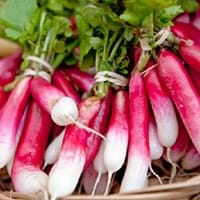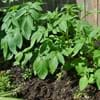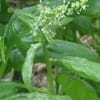Life Span
Annual or Biennial
Perennial
Type
Vegetable
Bulb or Corm or Tuber
Origin
Europe, Asia
South America, Argentina
Types
April Cross, Cherry Belle, Sicily Giant
Not Available
Habitat
Unknown
Temperate Regions
USDA Hardiness Zone
Not Available
5-9
Sunset Zone
A1, A2, A3, H1, H2, 1a, 1b, 2a, 2b, 3a, 3b, 4, 5, 6, 7, 8, 9, 10, 11, 12, 13, 14, 15, 16, 17, 18, 19, 20, 21, 22, 23, 24
21,22
Habit
Rosette/Stemless
Clump-Forming
Flower Color
White
Light Blue, Light Purple, Silver, Sky Blue
Flower Color Modifier
Bicolor
Bicolor
Fruit Color
Not Available
Not Available
Leaf Color in Spring
Green
Green, Light Green, Gray Green
Leaf Color in Summer
Green
Light Green
Leaf Color in Fall
Green
Several shades of Green
Leaf Color in Winter
Not Available
Light Green
Leaf Shape
Spinach Type
Grass like
Plant Season
Spring, Summer, Fall
Spring
Sunlight
Full Sun
Full Sun, Partial Sun, Partial shade
Growth Rate
Very Fast
Medium
Type of Soil
Loam
Clay, Loam, Sand
The pH of Soil
Neutral
Acidic, Neutral, Alkaline
Soil Drainage
Well drained
Well drained
Bloom Time
Indeterminate
Early Spring, Spring, Late Winter
Tolerances
Drought
Drought
Where to Plant?
Ground
Container, Ground
How to Plant?
From bulbs
By dividing rhizomes, tubers
Plant Maintenance
Medium
Medium
Watering Requirements
Keep the ground moist but not water-logged
Average Water Needs, Do Not over Water, Requires regular watering
In Summer
Lots of watering
Lots of watering
In Spring
Moderate
Moderate
In Winter
Average Water
Average Water
Soil pH
Neutral
Acidic, Neutral, Alkaline
Soil Type
Loam
Clay, Loam, Sand
Soil Drainage Capacity
Well drained
Well drained
Sun Exposure
Full Sun
Full Sun, Partial Sun, Partial shade
Pruning
No pruning needed
Remove damaged leaves, Remove dead branches, Remove dead leaves
Fertilizers
All-Purpose Liquid Fertilizer, Compost, Fertilize the soil instead of direct applying
All-Purpose Liquid Fertilizer
Pests and Diseases
Alternaria leaf blight, Black root rot, Clubroot, Damping-off, Downy mildew, Fusarium wilt, Scab, white rust
Slugs, Snails
Plant Tolerance
Drought
Drought
Flowers
Insignificant
Showy
Flower Petal Number
Single
Single
Fragrant Bark/Stem
Yes
No
Foliage Texture
Coarse
Medium
Foliage Sheen
Matte
Matte
Attracts
Beetles, Leafminer
Bees, Birds, Hummingbirds
Allergy
Headache, Itchiness, Skin rash, Stomach pain
Not Available
Aesthetic Uses
Not Used For Aesthetic Purpose
Showy Purposes
Beauty Benefits
Remove blemishes, Removes pimples
Not Available
Environmental Uses
Not Available
Air purification
Medicinal Uses
Asthma, Bronchitis, Cancer, Cardiovascular problems, constipation, Dehydration, Detoxifies lever, Diabetes, Digestion problems, Fever, High blood pressure, Immunity, Insect Bites, Jaundice, Kidney problems, Leucoderma, Liver problems, Piles, Respiratory Disorders, Skin Disorders, Sore throat, Urinary tract problems, Vitamin C, Weight loss
No Medicinal Use
Part of Plant Used
Leaves, Root
Flowers
Other Uses
Employed in herbal medicine, Used As Food
Not Available
Used As Indoor Plant
No
Yes
Used As Outdoor Plant
Yes
Yes
Garden Design
Edible, Herb, Vegetable
Container, Lawns and Turf, Mixed Border, Rock Garden / Wall, Wildflower
Botanical Name
RHAPHANUS sativus 'D'Avignon'
Ipheion uniflorum
Common Name
French radish,“French Breakfast” radish
Spring Starflower, Springstar
In Hindi
फ्रेंच मूली
Spring Starflower
In German
Französisch Rettich
Frühling Borretsch
In French
radis français
Spring Starflower
In Spanish
rábano francés
primavera Flor de estrella
In Greek
Γαλλικά ραπανάκι
άνοιξη starflower
In Portuguese
rabanete Francês
primavera Starflower
In Polish
French Radish
Wiosna Starflower
In Latin
French radicula
Spring Starflower
Phylum
Magnoliophyta
Magnoliophyta
Class
Magnoliopsida
Lilopsida
Order
Capparales
Asparagales
Family
Brassicaceae
Liliaceae
Clade
Angiosperms, Eudicots, Rosids
Angiosperms, Monocots
Tribe
Not Available
Gilliesieae
Subfamily
Not Available
Allioideae
Number of Species
Not Available
Not Available
Importance of French Radish and Spring Starflower
Want to have the most appropriate plant for your garden? You might want to know the importance of French Radish and Spring Starflower. Basically, these two plants vary in many aspects. Compare French Radish and Spring Starflower as they differ in many characteristics such as their life, care, benefits, facts, etc. Every gardener must at least have the slightest clue about the plants he wants to plant in his garden. Compare their benefits, which differ in many ways like facts and uses. The medicinal use of French Radish is Asthma, Bronchitis, Cancer, Cardiovascular problems, constipation, Dehydration, Detoxifies lever, Diabetes, Digestion problems, Fever, High blood pressure, Immunity, Insect Bites, Jaundice, Kidney problems, Leucoderma, Liver problems, Piles, Respiratory Disorders, Skin Disorders, Sore throat, Urinary tract problems, Vitamin C and Weight loss whereas of Spring Starflower is No Medicinal Use. French Radish has beauty benefits as follows: Remove blemishes and Removes pimples while Spring Starflower has beauty benefits as follows: Remove blemishes and Removes pimples.
Compare Facts of French Radish vs Spring Starflower
How to choose the best garden plant for your garden depending upon its facts? Here garden plant comparison will help you to solve this query. Compare the facts of French Radish vs Spring Starflower and know which one to choose. As garden plants have benefits and other uses, allergy is also a major drawback of plants for some people. Allergic reactions of French Radish are Headache, Itchiness, Skin rash and Stomach pain whereas of Spring Starflower have Not Available respectively. Having a fruit bearing plant in your garden can be a plus point of your garden. French Radish has no showy fruits and Spring Starflower has no showy fruits. Also French Radish is not flowering and Spring Starflower is not flowering . You can compare French Radish and Spring Starflower facts and facts of other plants too.





